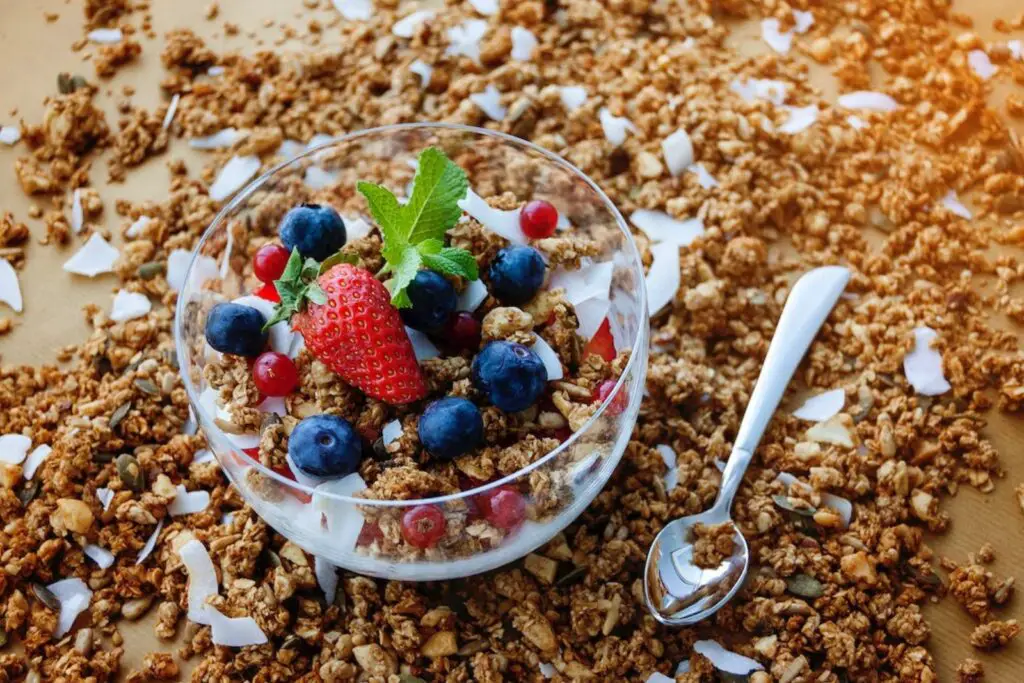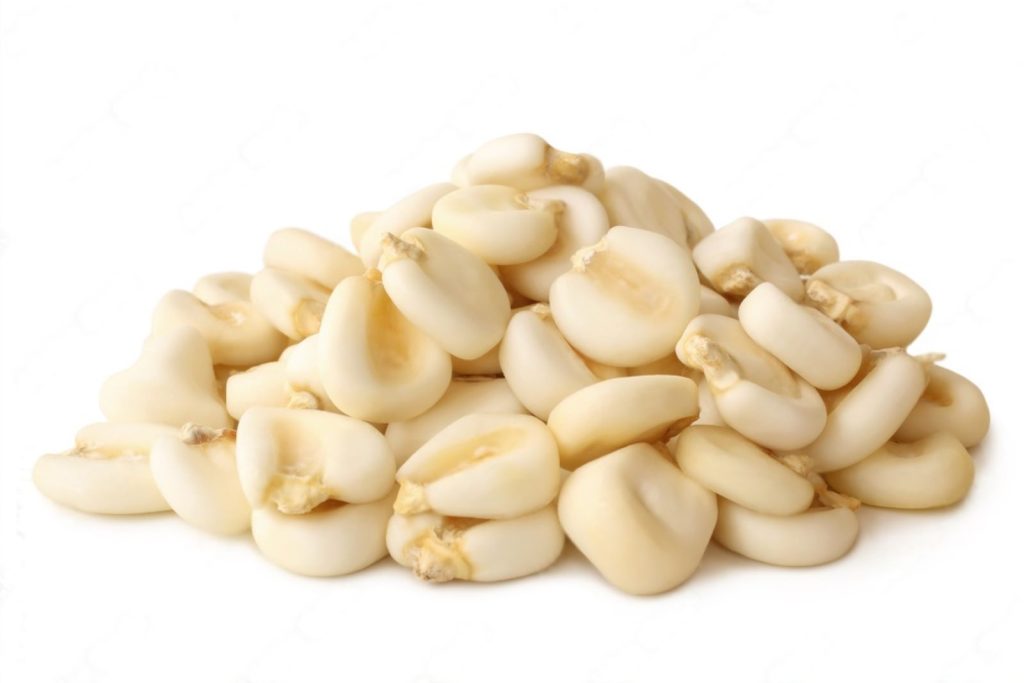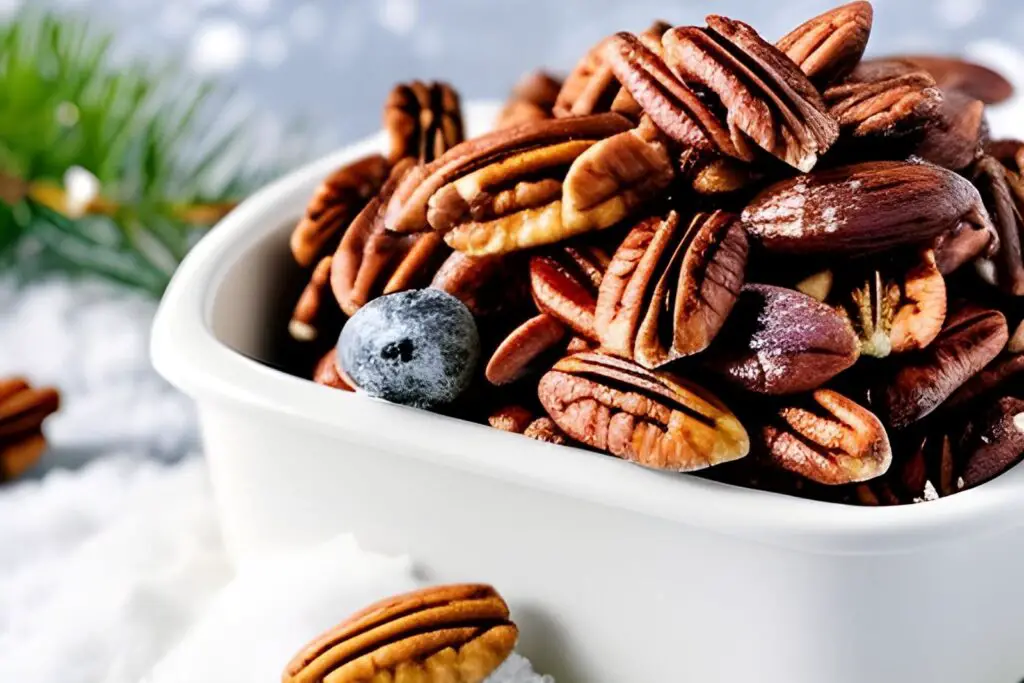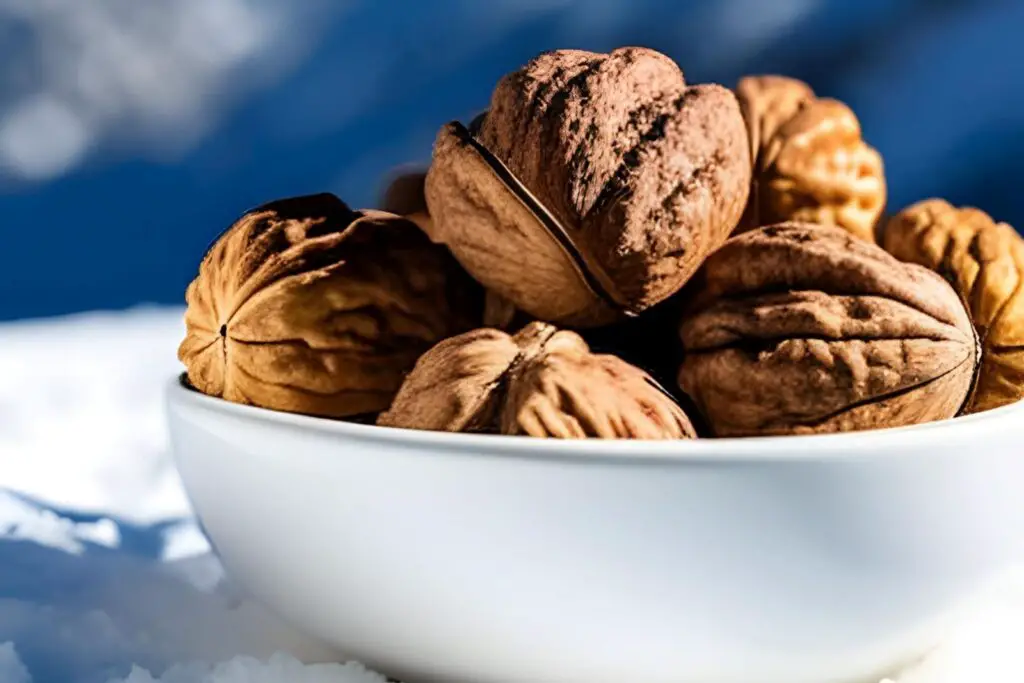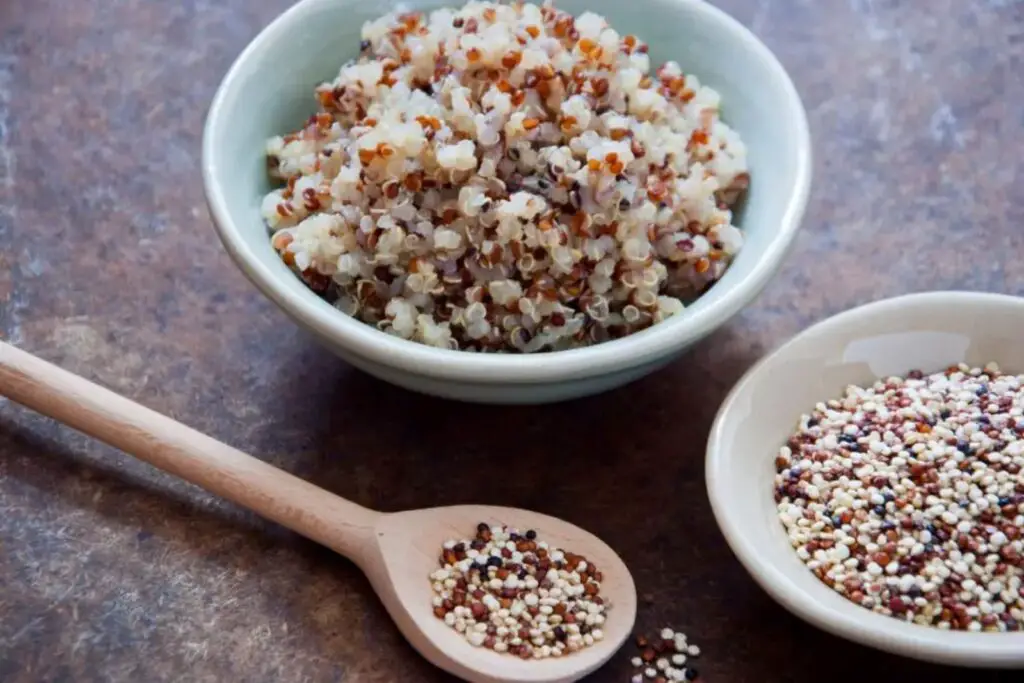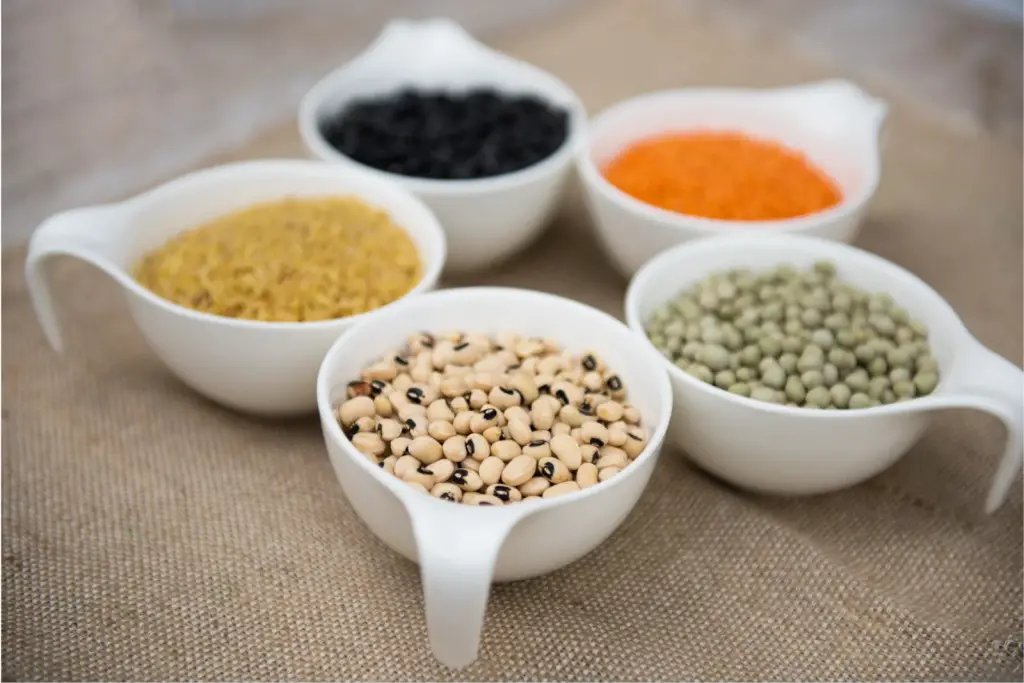
Chestnuts, with their rich and nutty flavor, are a delightful treat enjoyed by many during the fall and winter seasons. Whether you’ve gathered a plentiful harvest or stumbled upon a great deal at the market, freezing chestnuts is an excellent way to prolong their freshness and savor their taste all year round. By following a few simple steps, you can ensure that your chestnuts maintain their texture and flavor in the freezer, allowing you to enjoy them in a variety of recipes whenever the craving strikes.
Here is a step-by-step guide on how to freeze chestnuts:
Step 1: Harvest or purchase fresh chestnuts
Harvesting or purchasing fresh chestnuts is the first step in the process of utilizing these delicious nuts. Whether you have chestnut trees in your own backyard or you are obtaining them from a reliable source, it is essential to ensure that the chestnuts you select are of high quality.
If you have your own chestnut trees, harvesting the nuts can be a rewarding experience. Chestnut trees typically start producing nuts after they reach a certain age, usually around three to five years old. The nuts ripen in the autumn, typically between September and November, depending on the region.
To determine if the chestnuts are ready for harvest, look for signs of ripeness. The outer shell, known as the burr, will start to turn brown and split open, exposing the nut inside. It’s important to gather the chestnuts promptly as they fall from the tree or as soon as the burrs open, as they are vulnerable to spoilage or being consumed by wildlife.
If you don’t have chestnut trees of your own, you can purchase fresh chestnuts from a reliable source. Look for local farmers’ markets, specialty grocery stores, or chestnut farms in your area. When buying chestnuts, it’s important to choose ones that are firm, plump, and free from any signs of mold, damage, or insect infestation. Fresh chestnuts should feel heavy for their size, which indicates moisture content and freshness.
It’s worth noting that chestnuts are available in different varieties, each with its own unique flavor and texture. Some popular varieties include the American chestnut, European chestnut, and Japanese chestnut. The variety you choose may depend on personal preference or availability in your region.
Step 2: Prepare the chestnuts
Preparing chestnuts before freezing is an important step to ensure that they freeze and thaw properly without any issues. The preparation process involves rinsing the chestnuts and making a shallow incision on each nut.
To begin, thoroughly rinse the chestnuts under cold water. This step helps remove any dirt, debris, or residue that may be present on the surface of the nuts. Gently rub the chestnuts with your hands while rinsing to ensure a thorough cleaning.
Once the chestnuts are clean, take a sharp knife and make a shallow incision across the rounded side of each nut. This incision serves a crucial purpose: it prevents the chestnuts from exploding during the freezing process. Chestnuts have a high moisture content, and as they freeze, the liquid inside expands, which can cause the nuts to burst if not properly vented. The shallow incision allows the expanding liquid to escape during freezing, preventing any potential mishaps.
When making the incisions, be sure not to cut too deep into the chestnuts. A shallow cut, about 1/8 to 1/4 inch (3 to 6 millimeters) deep, is usually sufficient to release the pressure. It is important to make the incision across the rounded side of the chestnut, as this is where the nut expands the most during freezing.
Can I freeze roasted chestnuts?
Yes, you can freeze roasted chestnuts. Freezing roasted chestnuts is a great way to extend their shelf life and have them readily available for future enjoyment. After roasting, allow the chestnuts to cool completely, then package them in airtight freezer bags or containers before freezing.
Can I freeze chestnut puree or mashed chestnuts?
Yes, you can freeze chestnut puree or mashed chestnuts. Freezing chestnut puree or mashed chestnuts is a convenient way to preserve them for future use in recipes. Ensure that the puree or mashed chestnuts are properly packaged in airtight containers or freezer bags, removing excess air, to prevent freezer burn and maintain their quality.
Step 3: Blanch the chestnuts
Blanching chestnuts is a crucial step in their preparation process, as it helps enhance their flavor, preserve their quality, and facilitate the peeling of their outer shell. Blanching involves briefly boiling the chestnuts and then rapidly cooling them in ice water.
To begin blanching, bring a pot of water to a rolling boil. The pot should be large enough to accommodate the chestnuts comfortably. Carefully add the chestnuts to the boiling water and let them boil for approximately one minute. This brief boiling period helps soften the outer shell of the chestnuts, making them easier to peel later on.
After boiling, promptly remove the chestnuts from the hot water using a slotted spoon or a strainer. It’s important to transfer them immediately to a bowl filled with ice water. The ice water bath serves two purposes: it rapidly cools down the chestnuts and halts the cooking process, preventing them from becoming overly soft or mushy. Additionally, the rapid cooling helps loosen the outer shell, which aids in the subsequent peeling process.
Allow the chestnuts to remain in the ice water bath for a few minutes, ensuring that they are completely cooled. This step helps to firm up the nut meat inside while loosening the skin. Once the chestnuts are adequately cooled, remove them from the ice water and proceed with the peeling process.
Blanching not only helps improve the texture and flavor of the chestnuts but also makes peeling them much easier. The outer shell loosens during the blanching process, allowing for smoother removal of the skin later on. This step sets the stage for various culinary applications, such as roasting, baking, or using the chestnuts in recipes that call for peeled chestnuts.
Can I freeze chestnuts without blanching them first?
While it is possible to freeze chestnuts without blanching them first, blanching is generally recommended for better results. Blanching helps preserve the flavor, texture, and quality of the chestnuts by reducing enzyme activity and preventing discoloration. Without blanching, chestnuts may be more prone to freezer burn and their texture and taste may be compromised. However, if you prefer not to blanch them, ensure the chestnuts are properly shelled and peeled before freezing, and use them within a shorter storage period for the best outcome.
Step 4: Shell and peel the chestnuts
After blanching and cooling the chestnuts, the next step is to shell and peel them, revealing the edible chestnut flesh. This process requires a sharp knife and a careful approach to avoid damaging the chestnut meat.
Select one chestnut at a time and hold it firmly in your hand. With a sharp knife, make a small incision or cut along the flat side of the chestnut. Be cautious and ensure your hand is steady while cutting.
Once the initial incision is made, use the knife to carefully pry open the outer shell, applying gentle pressure to separate it into two halves. Take your time during this process to avoid crushing or damaging the chestnut meat inside.
With the shell removed, you will now see a thin, papery skin covering the chestnut flesh. To remove this skin, gently peel it away using your fingers or the knife. The skin is usually more delicate and easier to remove compared to the outer shell.
It’s important to handle the chestnuts with care to prevent the flesh from crumbling or breaking apart. Some chestnuts may be easier to peel than others, depending on their individual characteristics, so exercise patience and precision during the peeling process.
If you encounter any stubborn skin or shell fragments that are difficult to remove, you can use the tip of the knife or your fingers to carefully scrape them off. However, be cautious not to apply too much pressure or force, as this may cause damage to the chestnut meat.
Repeat this process for each chestnut until all the shells and skins have been removed, revealing the smooth, creamy chestnut flesh. The shelled and peeled chestnuts can then be used in various recipes or stored for future use.
By delicately shelling and peeling the chestnuts, you ensure that the edible part is accessible and ready to be incorporated into your culinary creations.
Can I freeze chestnuts in their shells?
It is not recommended to freeze chestnuts in their shells. Freezing chestnuts with their shells can result in the shells becoming brittle and difficult to remove after thawing. Additionally, the moisture within the chestnuts can cause the shells to crack during freezing, leading to potential quality issues. It is best to shell and peel the chestnuts before freezing them for optimal results.
Step 5: Divide into portions (optional)
Dividing the chestnuts into smaller portions before freezing is an optional step that can offer convenience and flexibility when it comes to using them later on. By portioning the chestnuts, you can thaw and utilize only the amount you need without having to defrost the entire batch.
To divide the chestnuts into portions, start by determining how much you typically use in your recipes or how many chestnuts you would typically need for a serving. You can choose to divide them into individual portions or group them based on your preferred measurements.
Once you have determined the portion size, use a freezer-safe container or freezer bags to separate the chestnuts. If using bags, ensure they are sealed tightly to prevent freezer burn and maintain the quality of the chestnuts. Alternatively, you can use individual small freezer containers or wrap each portion in plastic wrap or aluminum foil.
Label each portion with the date and quantity, so you can easily identify and track the contents when you’re ready to use them. It’s helpful to note the number of chestnuts in each portion or the weight if you prefer to measure them that way.
Dividing the chestnuts into smaller portions allows you to conveniently take out only the required amount for a specific recipe or meal while keeping the rest safely stored in the freezer. This way, you can minimize waste and ensure the remaining chestnuts retain their quality until you need them.
Remember to properly seal and store the divided portions in the freezer to maintain their freshness and prevent freezer burn. Chestnuts can typically be stored in the freezer for several months, allowing you to enjoy them throughout the year.
Step 6: Package and wrap the chestnuts
Packaging and wrapping the chestnuts properly before freezing is crucial to maintain their freshness, prevent freezer burn, and protect them from moisture and odors. This step involves using airtight freezer bags or containers and, optionally, adding an additional layer of aluminum foil for added protection.
First, place the shelled and peeled chestnuts into airtight freezer bags or containers. These bags or containers should be specifically designed for freezer storage, as they are thicker and more durable than regular storage bags or containers. Ensure that the bags or containers are clean and dry before adding the chestnuts.
If using freezer bags, it’s important to remove as much air as possible from the bag before sealing it. Air exposure can lead to freezer burn, which can negatively affect the quality and taste of the chestnuts over time. Squeeze the bag gently to push out any excess air, starting from the bottom and moving upward towards the opening, and then seal it tightly.
For added protection against freezer burn and to create a more secure barrier, you can wrap the bags or containers with a layer of aluminum foil. The foil helps to provide an extra layer of insulation and prevents air and moisture from reaching the chestnuts.
To wrap the bags or containers with aluminum foil, tear off a sheet of foil that is large enough to fully cover the bag or container. Place the bag or container in the center of the foil and fold the edges of the foil over it, sealing it tightly.
By packaging the chestnuts in airtight freezer bags or containers and optionally wrapping them with aluminum foil, you create a protective barrier that helps maintain their quality during freezing. The airtight packaging minimizes exposure to air and moisture, while the additional layer of foil provides insulation and further prevents freezer burn.
Can I freeze chestnuts in glass containers?
Yes, you can freeze chestnuts in glass containers, but it’s important to take precautions to avoid breakage. Use freezer-safe glass containers that are designed to withstand low temperatures and thermal shock. Leave enough headspace in the container to accommodate any expansion during freezing, and allow the chestnuts to cool before placing them in the freezer to minimize the risk of glass breakage due to sudden temperature changes.
Step 7: Label and date the packages
Labeling and dating the packages of chestnuts before storing them in the freezer is a crucial step to keep track of their contents and ensure that you can easily identify and utilize them at a later time.
By labeling each package, you provide important information about the contents, such as “Chestnuts” or “Peeled Chestnuts.” This simple label helps distinguish the chestnuts from other items in the freezer and reminds you of what is inside each package.
In addition to labeling the contents, it is essential to include the date of freezing on each package. This date serves as a reference point to gauge the chestnuts’ freshness and quality over time. It allows you to prioritize the use of the older packages first, ensuring that the chestnuts are consumed within their recommended storage period.
When labeling, use a permanent marker or labels that are resistant to moisture and freezer conditions. Write the information clearly and legibly on the package or label to avoid confusion later on.
Having the chestnuts properly labeled and dated provides convenience and organization. When you decide to use the chestnuts for cooking or baking, you can quickly identify the package with the desired quantity or measure the amount you need based on the information on the label. This helps prevent unnecessary thawing of the entire batch when only a portion is required.
Labeling and dating also help in maintaining an inventory of your frozen chestnuts. You can keep track of how many packages you have and when they were frozen, allowing you to plan your meals and recipes accordingly.
Step 8: Freeze the chestnuts
Freezing the packaged chestnuts properly is crucial to maintain their quality and extend their shelf life. This step involves arranging the packages in a single layer initially and then stacking them once they are partially frozen, while also considering their placement in the freezer to prevent any damage.
To begin, arrange the packaged chestnuts in a single layer in the freezer. By placing them in a single layer, you allow for quick and even freezing. This ensures that the chestnuts freeze solid without any clumping or sticking together.
After the chestnuts have partially frozen, which usually takes a few hours, you can stack the packages to save space in the freezer. Stacking is possible at this point because the chestnuts are already partially frozen, reducing the risk of them getting squished or deformed when stacked.
However, it’s important to be mindful of the weight and pressure applied when stacking the packages. Avoid placing heavy items on the chestnut packages to prevent crushing or damaging the nuts inside.
When choosing the location for freezing the chestnuts in the freezer, consider placing them in an area where they are less likely to get crushed or damaged. Avoid placing them near the freezer door, where they may be exposed to temperature fluctuations or movement when the door is opened frequently. Instead, find a stable and secure spot towards the back or in a designated area of the freezer.
By properly arranging and stacking the chestnut packages, as well as considering their placement in the freezer, you ensure that the chestnuts freeze evenly and remain in good condition. This careful approach allows you to preserve the quality of the chestnuts and make the most of the available freezer space.
Once frozen, the chestnuts can be stored in the freezer for several months, giving you the flexibility to use them whenever you desire. Proper freezing techniques help maintain their taste, texture, and nutritional value, ensuring that you can enjoy the deliciousness of chestnuts even after an extended period of storage.
What is the ideal freezing temperature when freezing chestnuts?
The ideal freezing temperature for chestnuts is at or below 0°F (-18°C). Freezing at this temperature ensures that the chestnuts freeze quickly and effectively, preserving their quality and minimizing the formation of ice crystals. Maintaining a consistently low temperature is crucial to keep the chestnuts in optimal condition during storage, helping to retain their taste, texture, and nutritional value.
How much freezer space do I need to store chestnuts?
The amount of freezer space needed to store chestnuts depends on the quantity you have. Chestnuts can be stored in a relatively compact space since they can be stacked and packed efficiently. As a general guideline, consider the volume of the packages or containers you have and ensure they fit comfortably in your freezer without overcrowding, allowing air to circulate around them for proper freezing.
Other related questions
How do I defrost frozen chestnuts?
To defrost frozen chestnuts, remove the desired amount from the freezer and transfer them to the refrigerator. Allow the chestnuts to thaw slowly in the refrigerator overnight or for approximately 6 to 8 hours. This gradual thawing process helps retain their texture and flavor. Once thawed, the chestnuts can be used immediately or kept in the refrigerator for up to a few days. Avoid using quick thawing methods like microwaving, as they can lead to uneven defrosting and negatively impact the quality of the chestnuts.
How long can I store frozen chestnuts?
Frozen chestnuts can typically be stored for up to 12 months without significantly losing quality. However, for the best flavor and texture, it is recommended to use them within 6 to 8 months. Properly packaged and stored chestnuts in airtight containers or freezer bags can maintain their quality for an extended period. Ensure the freezer temperature remains consistently at or below 0°F (-18°C) to preserve the chestnuts’ taste and texture throughout their storage duration. Regularly checking the quality of the frozen chestnuts and using the oldest packages first will help ensure the best results.
Can I refreeze previously thawed chestnuts?
It is generally not recommended to refreeze chestnuts that have been previously thawed. Once thawed, chestnuts undergo changes in texture and moisture content, making them more susceptible to freezer burn and quality deterioration upon refreezing. Refreezing can also lead to a loss of flavor and texture, resulting in less desirable chestnuts. To minimize waste, it’s advisable to thaw and use only the amount of chestnuts needed for a specific recipe or meal to ensure the best taste and quality.
How do I know if my frozen chestnuts have gone bad?
To determine if your frozen chestnuts have gone bad, start by inspecting their appearance. If you notice any signs of freezer burn, such as discoloration or dry, shriveled spots, it’s an indication that the chestnuts have deteriorated in quality. Additionally, if there are any signs of mold, unusual odors, or a rancid smell coming from the chestnuts, it’s best to discard them. Lastly, if the texture of the chestnuts feels mushy, slimy, or excessively soft after thawing, it’s a sign that they have spoiled and should not be consumed. When in doubt, it’s always safer to err on the side of caution and discard any chestnuts that raise concerns about their safety or freshness.
Can I use frozen chestnuts with fresh ones?
Yes, you can use frozen chestnuts alongside fresh ones in recipes. Frozen chestnuts can be a convenient substitute for fresh chestnuts, especially when they are out of season or not readily available. When using frozen chestnuts in a recipe, allow them to thaw completely before incorporating them into your dish. Keep in mind that the texture of frozen chestnuts may differ slightly from fresh ones, so take this into account when considering the desired outcome of your recipe. With proper thawing and appropriate recipe adjustments, frozen chestnuts can be a viable option to enjoy their unique flavor and texture year-round.
Can I freeze chestnuts in syrup or a sweetened liquid?
It is generally not recommended to freeze chestnuts in syrup or a sweetened liquid. Freezing chestnuts in syrup or a sweetened liquid can result in changes to the texture and flavor of the chestnuts. The liquid may become icy and crystallize, affecting the overall quality of the chestnuts. It is best to freeze chestnuts separately and add syrup or sweetened liquid when preparing a recipe or serving them.
Can I freeze chestnut flour or chestnut pieces for baking?
Yes, you can freeze chestnut flour or chestnut pieces for baking purposes. Freezing chestnut flour or chestnut pieces helps maintain their freshness and extends their shelf life. Package them in airtight containers or freezer bags to prevent moisture absorption and freezer burn, and store them in the freezer until you’re ready to use them in your baking recipes.

